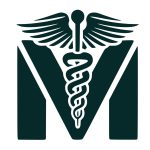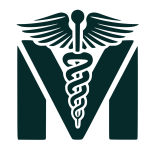Treatment
Liver Cancer
What is Liver Cancer?
Liver cancer (hepatic cancer) is a serious malignancy that begins in the liver cells.
1. Types:
- Primary Liver Cancer: Starts in the liver.
- Hepatocellular Carcinoma (HCC): (~75-90% of cases). Arises from hepatocytes (main liver cells). Strongly linked to chronic liver disease/cirrhosis.
- Intrahepatic Cholangiocarcinoma (Bile Duct Cancer): (~10-15%). Starts in the bile ducts within the liver.
- Less Common: Hepatoblastoma (rare, in children), Angiosarcoma/Hemangiosarcoma (very rare, in blood vessels).
- Secondary (Metastatic) Liver Cancer: Much more common. Cancer spreads to the liver from another organ (e.g., colon, breast, lung, pancreas). Treated based on the primary cancer.
- Symptoms (Often appear late in the disease):
- Unexplained weight loss
- Loss of appetite or feeling full quickly
- Upper abdominal pain (especially right side under ribs)
- Nausea or vomiting
- Weakness or fatigue
- Abdominal swelling (ascites – fluid buildup) or bloating
- Jaundice (yellowing of skin/eyes)
- White, chalky stools / Dark urine
- Itchy skin
- Fever
- Enlarged liver/spleen (felt by doctor)
- Risk Factors (Primarily for HCC):
- Chronic Viral Hepatitis:
- Hepatitis B (HBV): Major global risk factor (even without cirrhosis).
- Hepatitis C (HCV): Leading cause in many Western countries (usually progresses to cirrhosis first).
- Cirrhosis: Scarring of the liver from any cause is the biggest risk factor for HCC.
- Causes include:
- Chronic HBV/HCV
- Alcohol-Related Liver Disease (ARLD): Heavy, long-term drinking.
- Non-Alcoholic Fatty Liver Disease (NAFLD) / Non-Alcoholic Steatohepatitis (NASH): Rising cause due to obesity/diabetes epidemics.
- Autoimmune Hepatitis
- Genetic disorders (Hemochromatosis, Wilson’s disease, Alpha-1 antitrypsin deficiency)
- Aflatoxin Exposure: Toxin produced by mold on improperly stored grains/nuts (significant in parts of Africa/Asia).
- Other: Smoking, Type 2 Diabetes, Obesity, Certain Rare Diseases (e.g., Tyrosinemia).
- Screening & Early Detection (For High-Risk Individuals):
- Who: People with cirrhosis (any cause), chronic HBV (even without cirrhosis), certain genetic conditions, or cured HCC.
- How:
- Ultrasound (US): Every 6 months. Primary screening tool.
- Blood Test: Alpha-fetoprotein (AFP) tumor marker (often with US, but less reliable alone). Other markers (AFP-L3%, DCP) may be used.
- Diagnosis:
- Imaging: US (initial), then typically Multiphase CT scan or MRI with contrast to characterize the lesion.
- Blood Tests: Liver function tests (LFTs), AFP, HBV/HCV status, coagulation studies, kidney function.
- Biopsy: Not always needed if imaging is classic for HCC in cirrhosis (risk of bleeding/spread). Often required for atypical lesions or suspected cholangiocarcinoma.
- Staging: Uses systems like BCLC (Barcelona Clinic Liver Cancer), which incorporates tumor size/number, liver function (Child-Pugh class), performance status, and symptoms to guide treatment. Also, TNM staging.
- Treatment (Depends heavily on Stage & Liver Function):
- Surgical:
- Liver Resection (Surgery): Removal of the tumor + surrounding tissue. Only possible if the tumor is removable and liver function is good (usually reserved for early HCC in non-cirrhotic livers or very well-compensated cirrhosis).
- Liver Transplant: Curative option for early-stage HCC meeting specific criteria (e.g., Milan Criteria: 1 tumor ≤5cm or ≤3 tumors each ≤3cm, no major vessel invasion). Requires a donor organ.
- Ablative Therapies (For Small Tumors):
- Radiofrequency Ablation (RFA) / Microwave Ablation (MWA): Heat to destroy the tumor via a needle probe.
- Ethanol Ablation (PEI): Injecting alcohol into the tumor.
- Cryoablation: Freezing the tumor.
- Embolization (For Intermediate Stage/Multiple Tumors): Blocking the blood supply to the tumor.
- Transarterial Chemoembolization (TACE): Chemotherapy + blocking agent injected into liver artery.
- Transarterial Radioembolization (TARE / Y-90): Tiny radioactive beads are injected into the liver artery.
- Radiation Therapy:
- Stereotactic Body Radiotherapy (SBRT): Precise high-dose radiation for small tumors.
- External Beam Radiation: Sometimes used for symptom control.
- Systemic Therapies (For Advanced/Unresectable Cancer):
- Targeted Therapy: Sorafenib, Lenvatinib (1st line); Regorafenib, Cabozantinib (2nd line). Attack cancer cell growth pathways.
- Immunotherapy: Atezolizumab + Bevacizumab (1st line standard for advanced HCC); Nivolumab, Pembrolizumab, others. Help the immune system fight cancer.
- Chemotherapy: Less effective for HCC than for many other cancers. More commonly used for cholangiocarcinoma.
- Supportive/Palliative Care: Crucial at all stages to manage symptoms, side effects, and quality of life.
- Prevention:
- Vaccinate against Hepatitis B.
- Treat Chronic Hepatitis B/C: Antiviral medications can suppress HBV and cure HCV, reducing cirrhosis/HCC risk.
- Limit Alcohol Consumption.
- Maintain a Healthy Weight & Manage Diabetes: Reduce risk of NAFLD/NASH.
- Handle Food Safely: Reduce aflatoxin exposure (proper grain/nut storage).
- Regular Screening: For high-risk individuals (cirrhosis, chronic HBV).
- Use Precautions: Prevent HBV/HCV spread (safe sex, avoid sharing needles, safe tattoo/piercing practices).
- Prognosis:
- Highly variable, depends on stage at diagnosis, liver function (Child-Pugh class), overall health, and treatment response.
- Early-stage, treatable (resection/transplant/ablation): Potential for cure; 5-year survival can be 60-70%+.
- Intermediate/Advanced Stage: Systemic therapies extend survival, but the cure is rare; median survival is often measured in months to a few years, improving with newer drugs.
- Metastatic/End-Stage: Focus shifts to palliative care; prognosis is poor.
Critical Takeaway: Liver cancer is often linked to preventable or treatable underlying conditions (like HBV, HCV, alcohol, NAFLD). Early detection in high-risk individuals through screening offers the best chance for curative treatment. If you have risk factors, discuss screening with your doctor.


